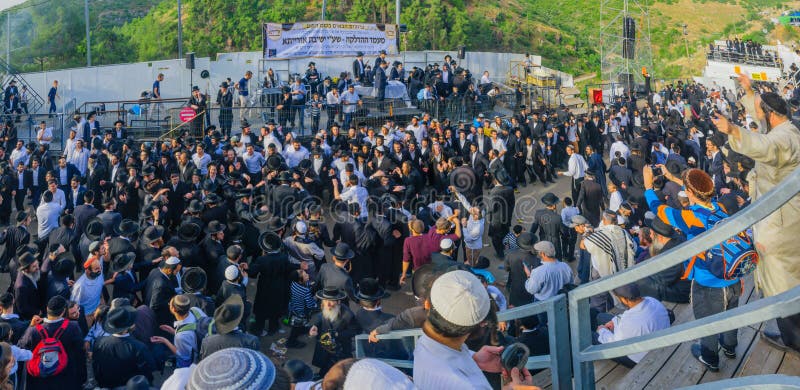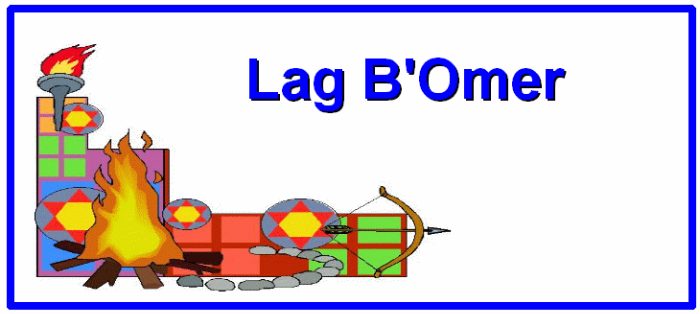

On the bus from Karmiel to Meron, we all sang together Bar Yochai. “But this year,” he said, “was something special. Shia S., a journalist from Antwerp, flies to Israel almost every year for Lag BaOmer. Hamodia spoke with a few of those who were there, and were kind enough to try to put into words for us what they felt in their hearts:

What they felt is exceedingly difficult, if not impossible, to capture in words, though words are all we have to work with. Most of all, the real story is in the hearts of those who were there, as well as those who participated in the hilula in a thousand other places and were with them in spirit. In the courtyard and its environs, Klal Yisrael, in all its variegations, from chassidic to Modern Orthodox, yeshivish to working guys, Ashkenazim, Sephardim, young and old, came together for joyous dancing and singing on the hilula of Rabi Shimon. Inside, at the kever itself, where thousands upon thousands daven for yeshuos, shidduchim, hatzlachah in Torah and every kind of ezras Hashem, with all their heart. It is not about crowd estimates or organizing efforts or police coordination or even the extraordinary chessed on the part of those who provide food and drink for weary travelers, medical treatment for the injured, or transportation for those with physical limitations who could not attend without their help.įor the real story is inside. But most of all, to a timely outpouring of siyatta diShmaya.Īs every year, the real story of Lag BaOmer cannot be told. This was thanks to the countless hours of preparation that began months ago, the orderly behavior of visitors and the cooperation of the bus companies and the Israeli police, who began stepping up their presence in the area days ago. (Elishama Sandman/Ohr HaRashbi)Īn estimated half-million Jews from all over Eretz Yisrael and the world converged on the kever of the holy Tanna Rabi Shimon Bar Yochai at Meron on Wednesday night and Thursday for the annual Lag BaOmer celebration.ĭespite the huge throngs streaming in and out of Meron from as early as Wednesday afternoon to Thursday evening, there were relatively few reports of delays, traffic jams and other disruptions, compared to past years. Many couples in Israel choose to get married on Lag BaOmer, and many people also choose to wait until that day to get a haircut or beard trim.Dancing in Meron shortly after the first hadlakah on Wednesday night. In remembrance of these events, some people celebrate with picnics and bonfires. 50-135 C.E.), the yahrzeit of 2nd-century mystical scholar Shimon bar Yochai, and a Jewish military victory over Roman forces in 66 C.E. Lag BaOmer commemorates a variety of historical events, including the end of a plague that killed many students of Rabbi Akiva (c. They must be complete.” This commandment led to the practice of the S’firat HaOmer, or the 49 days of the "Counting of the Omer,” which begins on the second day of Passover and ends with the celebration of Shavuot on the 50th day. The Book of Leviticus (23:15-16) also commanded: “And from the day on which you bring the offering…you shall count off seven weeks.

Biblical law forbade any use of the new barley crop until after an omer was brought as an offering to the Temple in Jerusalem. An omer (“sheaf”) is an ancient Hebrew measure of grain. The Omer has both agricultural and spiritual significance: it marks both the spring cycle of planting and harvest, and the Israelites’ journey out of slavery in Egypt (Passover) and toward receiving the Torah at Mount Sinai (Shavuot). (The numerical value of the Hebrew letter lamed is 30, and the value of gimel is three lamed and gimel together are pronounced “lahg.”) This holiday gives us a break from the semi-mourning restrictions (no parties or events with music, no weddings, no haircuts) that are customarily in place for some Jewish communities during the Omer.

Lag BaOmer is a minor, festive holiday that falls on the 33rd day of the seven-week period between Passover and Shavuot, a period of time is known as the Omer.


 0 kommentar(er)
0 kommentar(er)
